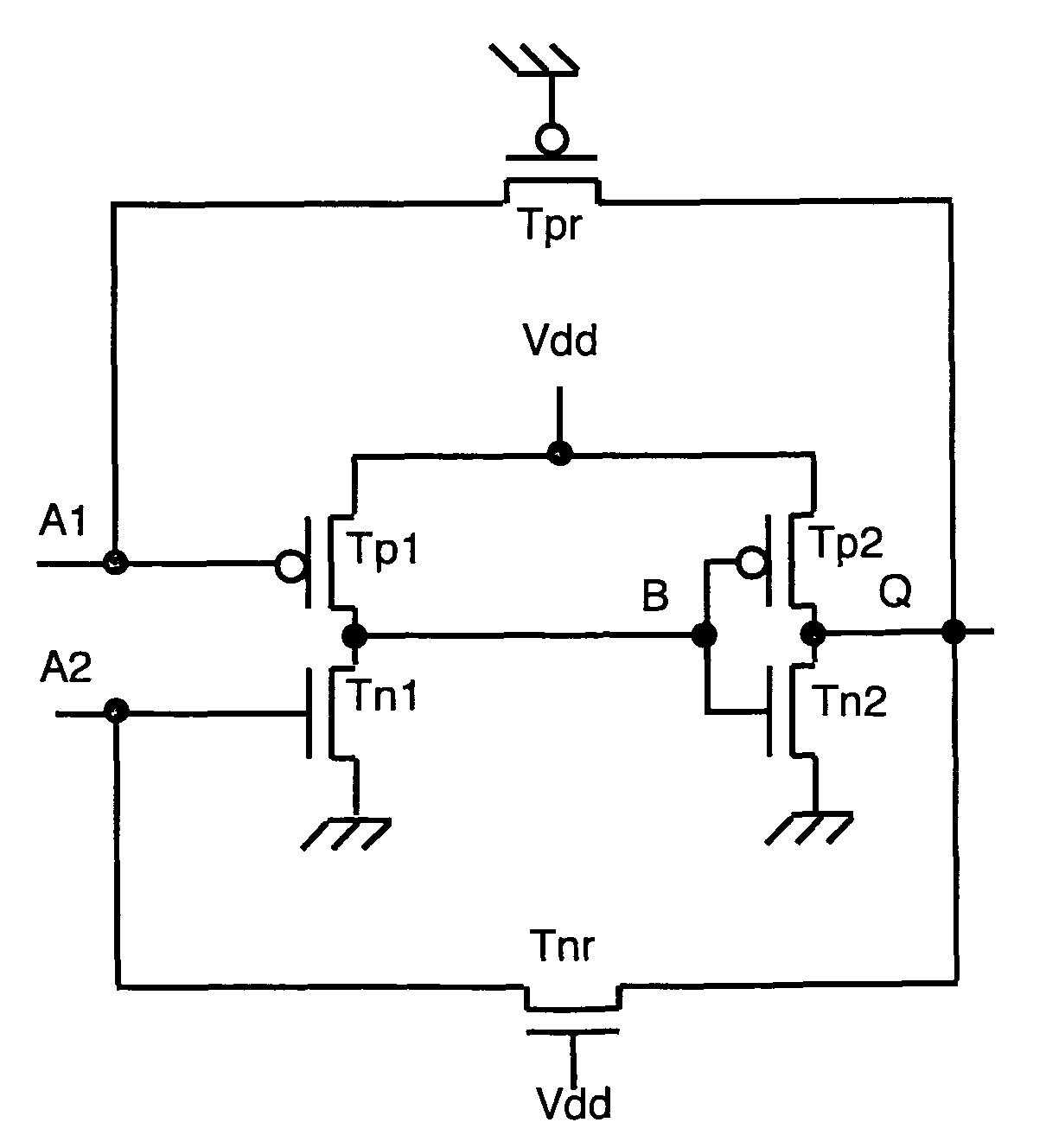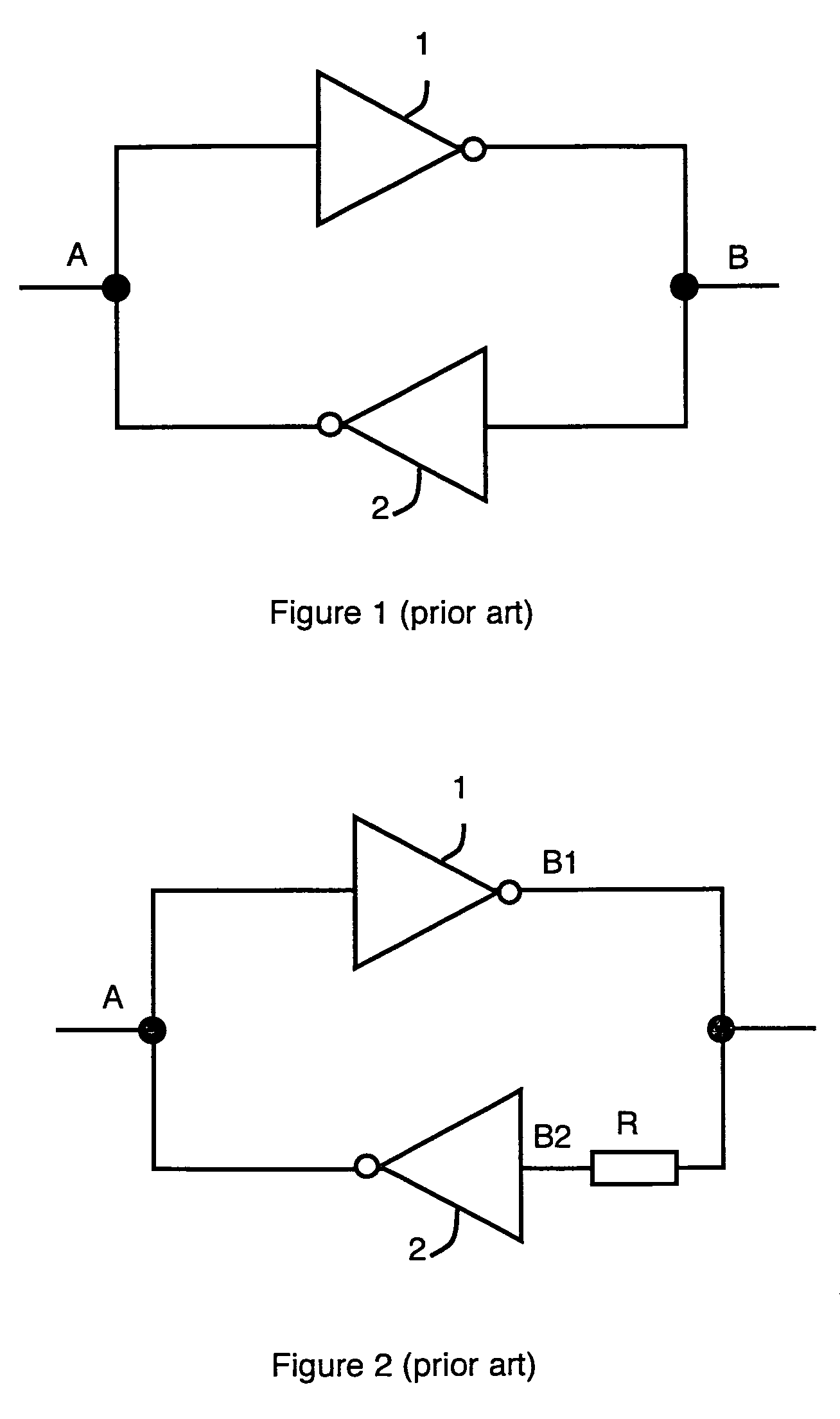Hardened memory cell
a memory cell and hardened technology, applied in the field of memory cells, can solve the problems of reducing the speed of the cell, affecting the storage efficiency of the cell, and the loss of the information it is supposed to store, and achieve the effect of low surface cos
- Summary
- Abstract
- Description
- Claims
- Application Information
AI Technical Summary
Benefits of technology
Problems solved by technology
Method used
Image
Examples
Embodiment Construction
[0030]In the alternative illustrated in FIG. 4, the first inverter comprises two inputs A1 and A2 to which identical signals are applied. First and second long transistors Tpr and Tnr, respectively P-type and N-type, are connected in two distinct feedback loops, respectively between the output Q of the second inverter and the gates of the transistors Tp1 and Tn1 respectively constituting the first and second inputs A1 and A2 of the first inverter. The gates of transistors Tnr and Tpr are respectively connected to the supply voltage Vdd and to ground and these two transistors are consequently always turned on. Propagation of a transient error from output Q to inputs A1 and A2 is delayed by the resistors formed by transistors Tpr and Tnr.
[0031]Direct connection of the output of the 1st inverter (Tp1, Tn1) and of the input of the 2nd inverter (Tp2, Tn2) prevents an additional delay from being introduced in the write phase. Moreover, this embodiment does not introduce any additional ste...
PUM
 Login to View More
Login to View More Abstract
Description
Claims
Application Information
 Login to View More
Login to View More - R&D
- Intellectual Property
- Life Sciences
- Materials
- Tech Scout
- Unparalleled Data Quality
- Higher Quality Content
- 60% Fewer Hallucinations
Browse by: Latest US Patents, China's latest patents, Technical Efficacy Thesaurus, Application Domain, Technology Topic, Popular Technical Reports.
© 2025 PatSnap. All rights reserved.Legal|Privacy policy|Modern Slavery Act Transparency Statement|Sitemap|About US| Contact US: help@patsnap.com



